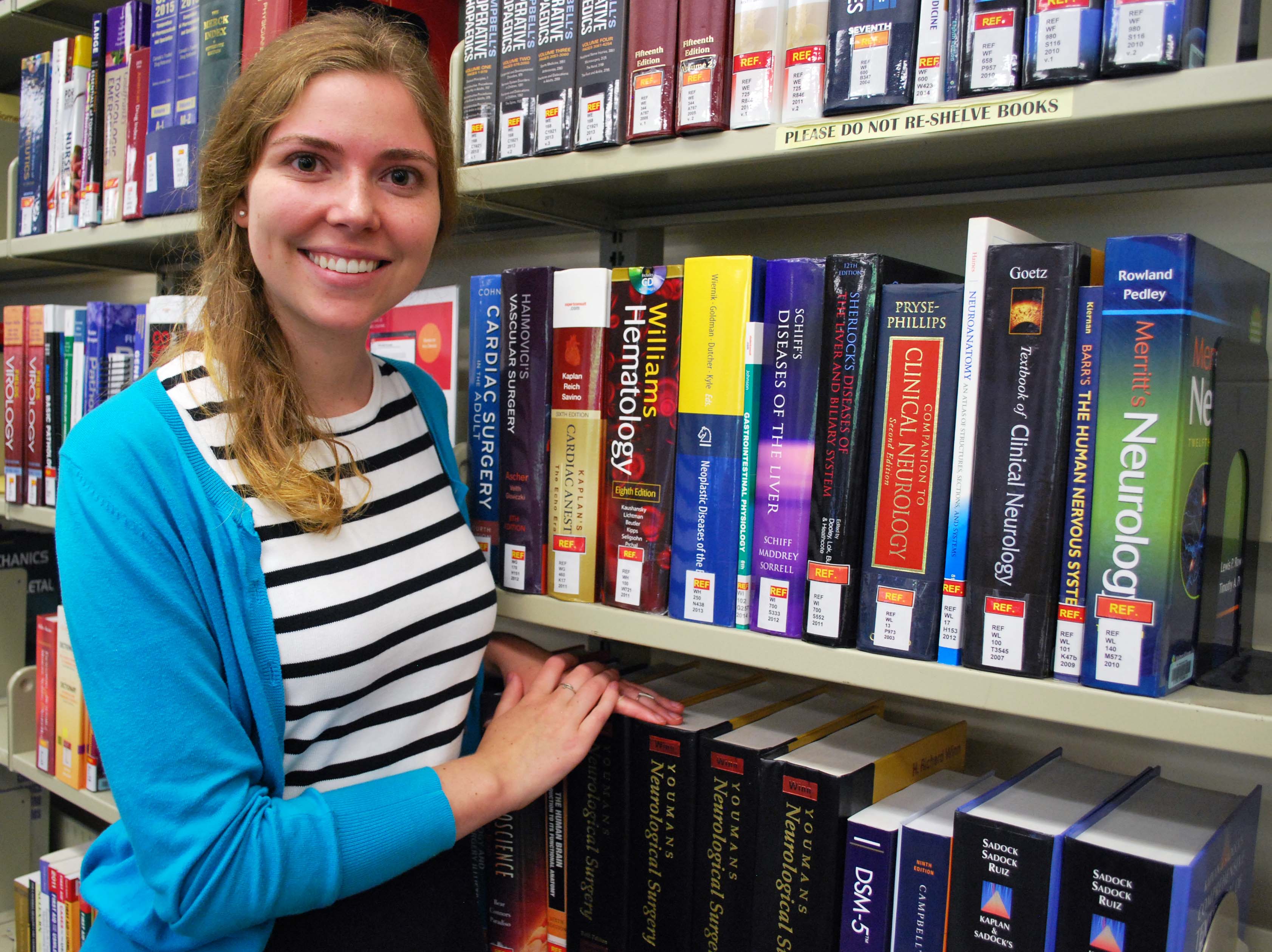A day in the life of a researcher
By Eleni Kanavas
Charlotte Cowan started thinking about what life as a researcher would entail after volunteering during the school year in an animal behaviour laboratory that trains sniffer dogs at Dalhousie University in Halifax.
Growing up in Toronto’s Moore Park-Leaside area with Sunnybrook Health Sciences Centre located in the heart of the neighbourhood, Cowan turned to the web to find summer student research programs available to undergraduates at Sunnybrook Research Institute (SRI).
Cowan, entering her third-year of neuroscience studies at Dalhousie University, was accepted into the D+H SRI Summer Student Research Program. She is working alongside Dr. Benjamin Goldstein, a scientist in the Hurvitz Brain Sciences Research Program at SRI and director of the Centre for Youth Bipolar Disorder. His research focuses on bipolar disorder among adolescents, which is the fourth most disabling medical condition among youths worldwide.
“There is so much to be discovered about the brain; just the way it works and what’s behind behaviour is what really drives me,” she says. “Why does someone act one way and someone else act another [way]?”
To answer that question, Cowan is applying her background in neuroscience along with her passion for psychology and biology. She is looking at a specific polymorphism, the existence of a gene in many allelic forms, in a protein called brain-derived neurotrophic factor (BDNF) to understand the influence of the polymorphism on the early onset of bipolar disorder.
“We are looking at a specific polymorphism and seeing what it is linked to in the brain, and what it’s doing to the body. If we can associate it with the structural abnormalities caused by bipolar disorder, this could be something looked at in terms of diagnosing bipolar disorder earlier and more accurately,” she says.
Cowan is also looking at magnetic resonance imaging (MRI) scans of the brain using neuroimaging software that will segment an image automatically, dividing and labelling the regions of the brain.
“We load the MRIs onto the FreeSurfer program and it will automatically spit out cortical thicknesses, cortical volumes and subcortical volumes. My specific target is the hippocampus, one of the areas in the brain where BDNF is most active. FreeSurfer will give me the volume of the hippocampus for all of the MRI scans,” she says. “We can do statistical analysis [on the data] and compare everyone, all the bipolar participants and all the controls, and can compare all the different genotypes using this software. I hope that the statistical results can help us to understand the influence of the polymorphism on adolescent bipolar disorder.”
Twelve weeks into the summer program, Cowan says it has been a rewarding experience thus far, and one that has fulfilled her quest for a snapshot into the day-to-day life of a researcher.
“I think it’s really hard to decide what you want to do with your life without giving it a try first. I wanted to gain research experience and see if this is truly something I want to pursue,” she says about seeking a career as a clinician-scientist.
The one thing Cowan didn’t realize was how much background research is involved and how intensive the literature review process can be in writing a paper.
“Dr. Goldstein is very helpful in [my] scientific writing. My project is really putting the skills that I’ve learned in school into use,” she says. “It’s a direct connection back to Dalhousie, which is great, and just using all those skills is such great experience.”
In September, Cowan will continue her studies at Maastricht University in the Netherlands as part of an exchange program in neuroscience with Dalhousie University.
Charlotte Cowan received a D+H Summer Studentship Award.



